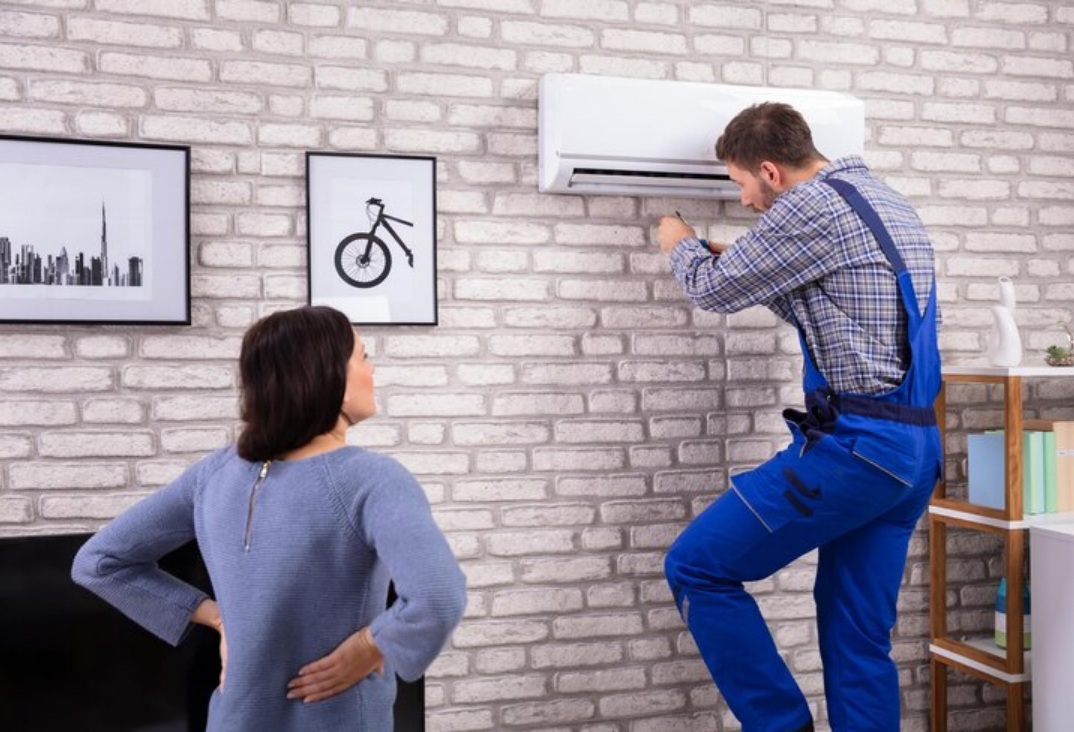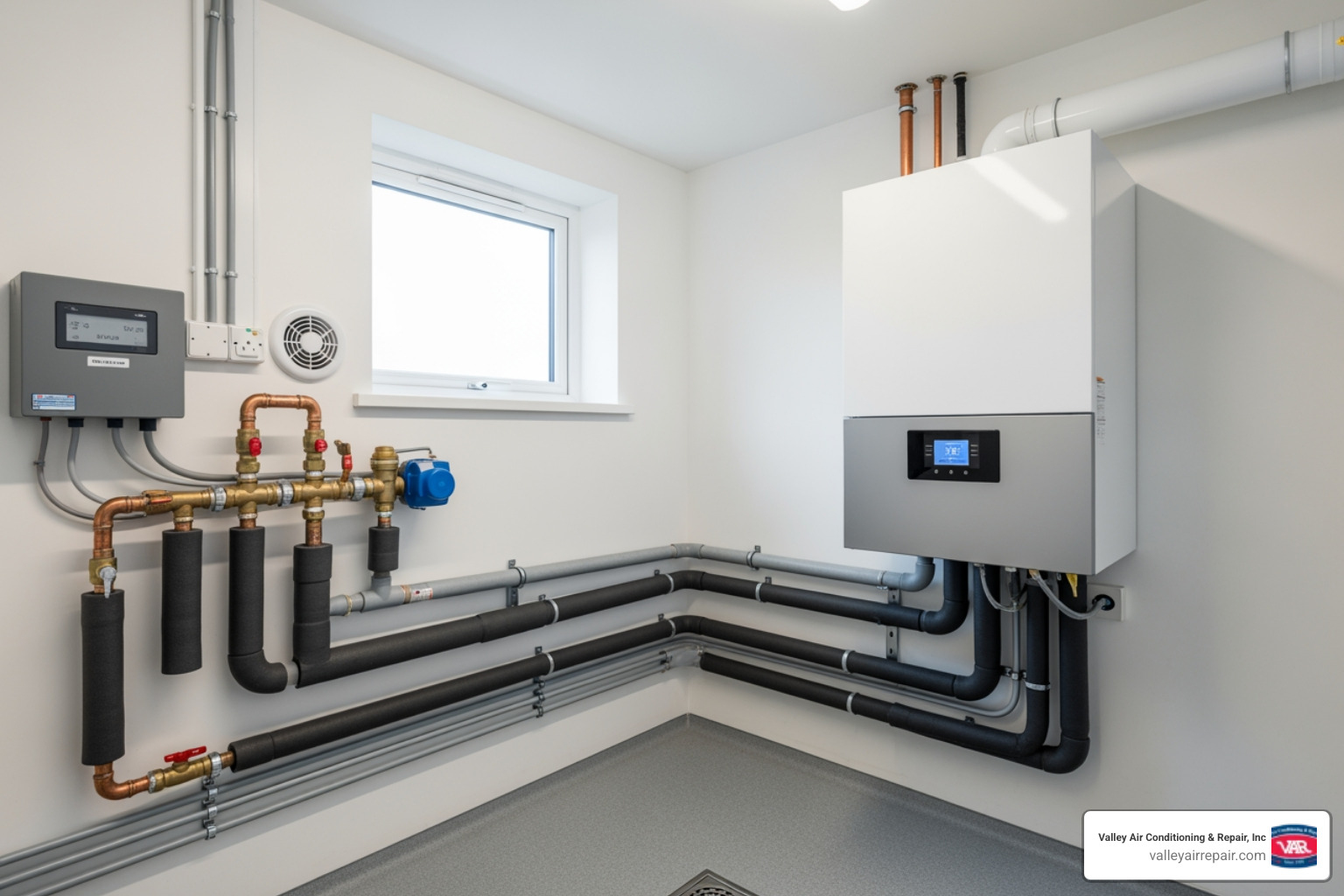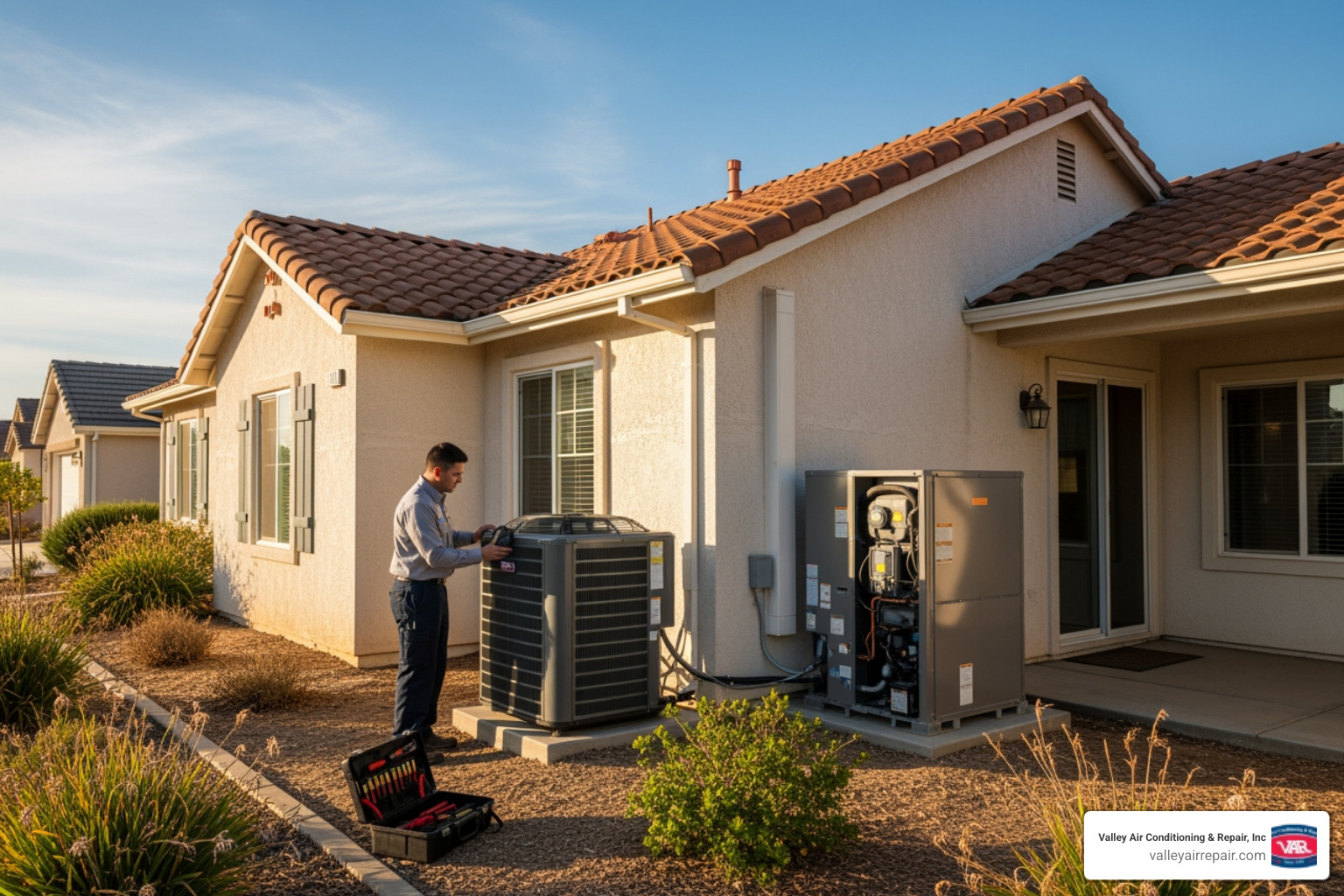5 Signs Your AC Control Board Is Failing in Kerman

When your AC begins acting up, your first thought might be that something’s wrong with the thermostat or the compressor. But there’s one important part of the system that often gets overlooked—the control board. This component is basically the brain of your air conditioning unit. It sends signals to parts like the fan and compressor, making sure everything runs smoothly and in the right order. When the control board fails, it can cause a ripple effect across your entire system. And in hot summer months in Kerman, a broken AC is the last thing anyone wants to deal with.
Recognizing the early signs of a failing control board can save you from larger headaches down the line. The trouble is, most homeowners don’t know what to watch for. A control board doesn’t just suddenly die. It usually gives off a few warning signs first. Knowing what those are makes a big difference in avoiding discomfort, higher energy bills, and surprise breakdowns. Below are common issues that point to control board problems, so you can know when it’s time to get professional help before things get worse.
AC Unit Not Turning On
If you’ve ever tried switching on your air conditioner and nothing happens—no fan kick, no hum from the unit—there’s a chance the control board is to blame. It’s responsible for triggering the startup process, relaying instructions from the thermostat to the mechanical systems inside your AC. When that signal doesn’t get delivered, your system won’t come on at all.
This issue can show up suddenly, or it might start with a delay. For example, you press the power button or adjust the thermostat and instead of starting up right away, the unit stays quiet. You might try turning it off and on again or adjusting the settings, only to still be left with a warm house and no airflow. It's easy to assume there’s a wiring issue or that the thermostat is broken, but when those are ruled out, it often comes back to the control board not sending the signals it should.
Sometimes the problem shows up inconsistently. The unit might work fine one day, only to be unresponsive the next. These erratic patterns usually get worse with time. Ignoring them can lead to full system failure during peak temperatures—something no homeowner wants to face in a place like Kerman, where dry summer heat makes AC a daily necessity.
Inconsistent Cooling
If your home feels cool in one room and warm in the next, your system may be struggling to keep temperatures steady. Uneven cooling is more than just an inconvenience—it’s often rooted in communication problems between the thermostat, the control board, and the actual cooling equipment.
A faulty control board might send out the wrong signals or fail to trigger a component entirely. The result: your AC may run too long, not long enough, or at inconsistent intervals. None of that helps when you're trying to maintain a steady indoor environment. You might notice that some vents blow cold air while others don’t, or that the system seems to shut off just before the room hits the set temperature.
Here are some signs that point to cooling inconsistencies tied to control board trouble:
- The temperature in the living room is cooler than in the bedroom, even though both are on the same setting
- The AC turns off before reaching the thermostat’s set point
- Certain areas of the house feel sticky or humid
- The system short cycles, especially during the hottest parts of the day
These symptoms can get frustrating fast. Residents in Kerman rely on steady cooling throughout the summer months, and having pockets of warm or humid air in the home takes away from overall comfort. Catching these issues early helps avoid strain on the whole system, as an overworked compressor or blower can fail if the core communication piece—the control board—isn’t working right.
Display Errors or Blank Screen
When the control board starts to fail, one of the more obvious signs is a problem with the display. If your AC unit uses a digital interface or communicates through a thermostat display, this portion of the system heavily relies on constant communication with the control board. If that connection weakens or cuts out entirely, the screen might freeze, show odd symbols, or go completely blank.
Some common display-related signs linked to control board failure include:
- The thermostat is on, but the temperature reading doesn’t match the room
- Error codes show up with no clear explanation
- The display flickers, freezes, or resets unexpectedly
- The AC settings appear changed or unavailable even though no adjustments were made
These errors can be confusing. It’s easy to blame the thermostat or think there's a power issue. But if the wiring checks out and the thermostat works fine with another system, that points back to the control board. Even when the screen functions properly, if it’s showing incorrect information while your AC doesn’t respond, your board may not be delivering accurate instructions.
Delays in responding to display issues can lead to more complicated breakdowns, as the board might start misfiring other signals, causing cooling cycles to run erratically or fail to start altogether.
Strange Noises or Clicking Sounds
Unusual sounds should never go unaddressed. A healthy AC system runs with a steady hum, maybe a bit of airflow noise, but anything outside of that deserves attention. Clicking sounds, in particular, can suggest a problem with relays on the control board. When these components wear down or fail, the board may struggle to connect with the blower motor or compressor.
You may hear repeated clicking when the system tries to start but never follows through. The noise comes from the control board attempting to send signals that the rest of the AC isn’t receiving or acting on. In some cases, other electrical noises, like buzzing or rapid relay engagement, can point to an internal problem on the board’s circuitry.
Even if the system is still cooling your home, these sounds are a warning. They show that parts of the board may already be struggling. Allowing those noises to continue without an inspection could increase wear on the components they’re failing to control correctly.
Frequent Cycling On and Off
Short cycling—where your AC turns on and off too often—is one of the clearest signs of an internal control issue. The system may start, run briefly, then shut off, only to repeat the process every few minutes. This constant start-stop pattern causes extra wear on parts, leads to inconsistent temperatures, and drives up energy bills.
The control board plays a key role in how long the compressor and blower fan operate during a cycle. When it malfunctions, it may shut down the cycle early or fail to maintain it at proper intervals. This confuses the system, interrupts the cooling process, and often prevents indoor temperatures from ever stabilizing.
Sometimes short cycling is due to other causes, like low refrigerant or sensor issues. But if those have been ruled out, and you're still seeing rapid starts and stops, the control board is likely where the problem lies.
Short cycling tied to a failing board usually gets worse over time. While your AC might still produce cool air, it won’t do so efficiently. The extra stress on your components may trigger future failures, such as a blower motor overheating or a compressor lock-up.
Ensuring Your AC Runs Smoothly
If you notice one or more of these signs, it’s a good idea to take action before the system fails completely. The control board is involved in nearly every function your AC carries out. When it doesn’t work the way it's supposed to, it creates a chain reaction of problems—error messages, incomplete cooling, strange noises, and frustrating on-off cycles.
Waiting too long can lead to breakdowns during the hottest days in Kerman, where reliable AC makes all the difference in your home comfort. Catching these issues early doesn’t just keep your home cool—it helps avoid added costs from replacing other damaged parts affected by a malfunctioning board.
Having your system looked at by our professionals through an AC tune-up in Fresno is the best way to keep everything running right. Our technicians can test your control board, check for signal issues, and help stop more expensive damage early on. With regular checks, you protect your whole system and stay comfortable all summer long.
If your AC control board issues are causing unpredictable cooling and strange noises, it may be time to schedule an AC tune-up in Fresno to keep your system running efficiently. Valley Air Conditioning & Repair, Inc. is committed to helping you maintain reliable indoor comfort. For a quick estimate or to book a service visit, please contact us today.




.webp)










